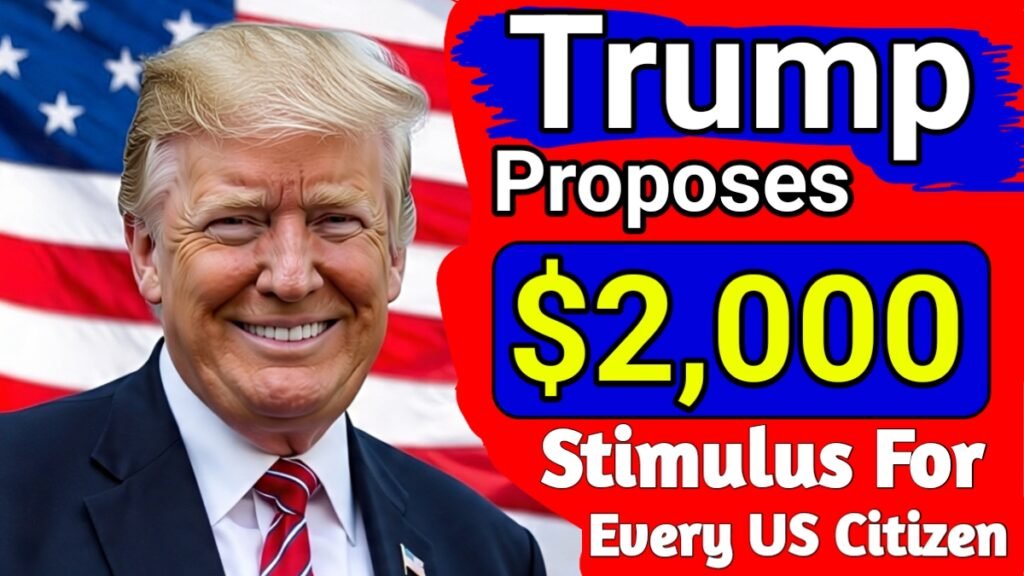Big News : Hold on to your wallets—there’s talk on the Hill that Americans might be in line for another round of relief. Former President Donald Trump has floated the idea of issuing direct payments of up to $2,000 to U.S. taxpayers, sparking excitement, skepticism, and plenty of questions. Here’s what we know so far—and what this could mean for you.
What’s the Proposal?
Trump recently told reporters that his administration is “looking at something” that could distribute payments to citizens, funded by revenue collected from tariffs. He said the checks could fall in the range of $1,000 to $2,000, describing them as a kind of “distribution to the people, almost like a dividend.” (Axios) He reiterated that the bigger goal remains paying down the federal debt, but the possibility of cash relief is being actively discussed.
ALSO READ : Yellowstone Without Taylor Sheridan? The Shocking Truth About the Show’s Future
Funding Source & Mechanics
Trump’s proposal links the potential payments to tariff revenue—import duties levied on goods coming into the U.S. According to reports, the government’s tariff collections have surged, opening up the possibility of using part of that revenue for relief payments.
ALSO READ : Direct Deposit of $4,983 for Everyone in November 2025? Learn About Eligibility, Payment

Still, while the idea is gaining media attention, no legislation has been passed yet, and no formal rollout plans have been approved by Congress. The payments remain speculative at this stage.
What It Could Mean for Americans Big News
If this goes forward, here’s a breakdown of how things might play out:
ALSO READ : The 2025 Honda Gold Wing GCT Is Here – Ultimate Touring Beast Goes High-Tech
- Eligible individuals could receive up to $2,000 in a direct payment.
- The payments would likely target taxpayers below certain income thresholds, though exact numbers haven’t been released yet.
- It would mark a departure from traditional stimulus measures—this time using tariff revenue rather than emergency pandemic relief funding.
- For many households still grappling with rising costs and inflation, even a $1,000 payment would represent meaningful financial relief.
What to Keep in Mind
Table of Contents
While the idea is stirring hope, there are several important caveats:
ALSO READ : Landman Season 2 Episode 1 Trailer : Sam Elliott & Billy Bob Thornton Return
- The proposal is not yet law. Until Congress enacts legislation approving the payment, nothing is guaranteed.
- The IRS and other authorities have warned about scams related to stimulus-style claims. Any unsolicited message promising payments should be treated with caution.
- Even if approved, distribution timing, eligibility criteria, and payment method could vary widely—and may take months to implement.
The Bigger Picture
Trump’s renewed push for direct payments taps into a familiar narrative: using governmental revenue surpluses (in this case, tariffs) to deliver benefits directly to citizens. For voters, the proposal could be a powerful signal—but for policy wonks, it raises questions about budget implications, debt impact, and long-term economic effects.
ALSO READ : $2,000 Direct Deposit for US Citizens in November 2025 – Eligibility, Payment Dates, and IRS
The tariff revenue mechanism is particularly interesting: tariffs can raise consumer prices and potentially burden households, so returning that money might be seen as atonement or redistribution. But economists caution about unintended consequences, including inflationary pressures or trade retaliation.
The Bottom Line
Yes — Donald Trump is proposing direct payments of up to $2,000 for Americans this time around. But it’s not locked in yet. Until Congress acts, it remains a proposal, not a promise.
If you’re hoping for relief, it’s wise to follow the developments, verify your eligibility when (and if) the program launches, and stay alert to scams. This could be meaningful money—just don’t count on it until the paper is signed.

